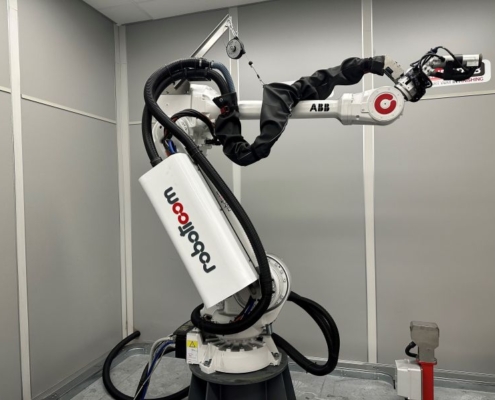Meet the CMS Kreator — Now Available in Australia
Australia’s first hybrid large-format 3D printer with integrated 5-axis milling is here. From prototyping to tooling, the Kreator is built to streamline your additive manufacturing workflow and it’s available for demos and consultation now.
This impressive CNC milling + Screw Extrusion Additive Manufacturing (SEAM) printing hybrid is a real game-changer. It’s perfect for the aerospace, automotive, marine and renewables industries – plus anyone else who wants to “try before they buy”. Here’s a look at how and why.

Reducing Time, Cost, and Waste
What do you get when you merge one of the largest 3D printers in the world with a CNC milling machine?
A super efficient hybrid that crafts lightweight, strong parts, fast – and at low cost.
Two models of the machine are available, with two different flow rates. The first is equipped with two bridges – one for printing and the other for milling – with a flow rate of 10kg/hour. The second has a flow rate of 100kg/hour. Australia is about to receive the former. Pun intended.
The impact this hybrid brings is best illustrated by comparing processes. Take, for example, autoclave mold manufacturing for the aerospace industry. Traditionally, this would be a 6-step process. The Kreator compresses it down to three – with impressive results.
“Using a traditional process, machining of epoxy tooling boards with a size of 1000 x 600 x 300mm, made from ABS + 20% carbon fibre weighs in at approximately 150kg. Using the Kreator, weight goes down to 40kg. That’s a 60% savings in materials used and weight of the part. In terms of time-saving, you would probably save about 50%,” says Anthony, our Advanced Materials and Plastics rep.
It’s been a long time since the era of the Innovation Nation – could we be heralding in a fresh new wave?
From Six Steps to Three: The Power of Hybrid 3D Printing
Australia’s vision for the Kreator is to use it as a catalyst for innovation. Purchased by a public facility for the purpose of enabling manufacturers to prototype parts before investing in large-scale production, this really marks a huge leap towards home-grown breakthroughs.
“For example, a company can reach out to the facility and they can provide access to advanced capabilities for the development of parts, processes, people and partnerships. They are designed to deliver advanced manufacturing solutions to customers in a production-relevant environment.” explains Anthony.
Once up and running, local designers and manufacturers get to send their projects to the facility and have parts printed in a range of polymers – everything from PLA, Polycarbonate, ABS, with options for glass or carbon fibre reinforcements. Not only does this save on cost and time to production – it also keeps IP safe within Australia’s borders.
READY TO FIND OUT IF THE KREATOR IS RIGHT FOR YOUR BUSINESS?
Chat with a member of our experienced team. We’re here to help you find the right machine for you.












